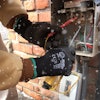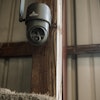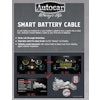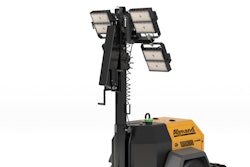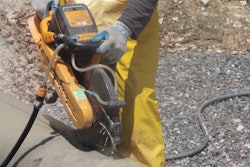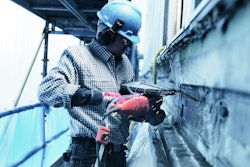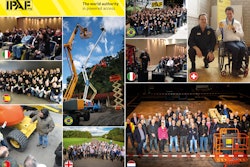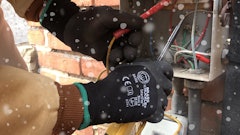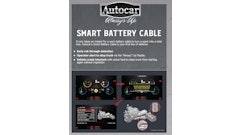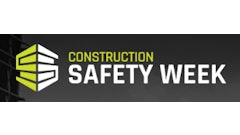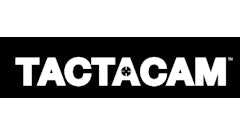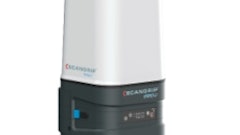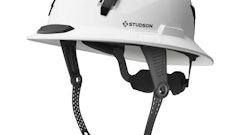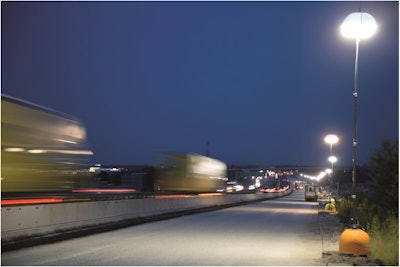
In a recent survey conducted by the Asphalt Pavement Alliance, eight out of 10 drivers said they preferred if road maintenance was performed during off-peak hours. It’s one of the reasons most road building contractors work at night. Traffic coming through your work zone is also reduced at night so productivity can increase dramatically. What decreases, however, is your visibility and the visibility of any drivers that do end up near your work zone.
This is why it’s imperative to develop a lighting plan for each job and always properly illuminate your job and your employees. Proper and adequate work zone lighting, along with proper reflective PPE, can help make your workers, and the traveling public, safer in these conditions.
Develop a lighting plan
First, it’s important to develop a lighting plan for each job. Creating a basic lighting scheme helps you and your crew accomplish the following objectives:
- Provide the appropriate level of lighting that allows construction work to be completed safely and effectively
- Reinforce both the intent of the traffic control plan as well as provide better guidance for drivers traveling through the work zone; and, most importantly
- Improve the overall safety of the workers and traveling public
“A few hours of planning can offset a lot of time bringing in auxiliary lighting later in the project,” Rob Bresnahan from Larson Electronic says. “There is a lot of inefficiency in moving around your light sources to different parts of the site. Productivity slows for the entire crew every time they wait for additional lighting.”
Draw out the project area using a scale layout of the jobsite. The drawing should show types of work, with the location of workers and equipment. If needed, sketch out locations of key traffic control items, obstructions and flagger/spotter stations to ensure lighting is provided for them.
“As a minimum the plan should ensure that all DOT specs are met on the construction site,” Ingmar Hansen, vice president of POWERMOON Enterprises Ltd says. “Then it should evaluate the need of stationary as well as portable lights. Stationary lights are lights on tripods or conventional light towers which tend to stay in one place. Portable lights are lights that usually move along with the construction site on for example machinery. In all cases balloon lights are a great option.”
“You also have to consider how those light sources are going to be powered,” Bresnahan says. “Will they be using site power from the grid or from generators? If they are light towers, is there a clear path to reach them for re-fueling? Considerations should also be factored in for overlapping the beams from different light sources to eliminate shadowing from the workers themselves. Operators are trying to avoid a loss of productivity due or accidents resulting from having dark zones on the work site.”
Levels of lighting
When you develop a lighting plan, you want to take into consideration the type of work activities you will be doing, and therefore the level of lighting you are going to need.
There are three levels of lighting for different work zone considerations.
- Level I: All work operations areas; setup of lane or road closures, lane closure tapers, and flagging stations. Level I illuminance is important in areas where the work crew is in motion, moving from spot to spot. This level of illuminance is appropriate for tasks requiring low accuracy, involving slow-moving equipment, and where there are large objects to be seen. Level I illuminance requires 5 foot candles (fc)* of average maintained illuminance.
- Level II: Areas on or around construction equipment; asphalt paving, milling, and concrete placement/removal. Level II illuminance is recommended for areas on or around construction equipment to provide a safer environment for the workers operating the equipment, allowing them to perform tasks that require a moderate level of accuracy. Level II illuminance requires 10 fc of average maintained illuminance.
- Level III: Pavement or structural crack/pothole filling; joint repair, pavement patching/repairs; installation of signal/electrical/mechanical equipment. Level III illuminance is appropriate for those tasks that require a greater level of visual acuity or for tasks with a higher level of difficulty. Level III illuminance requires 20 fc of average maintained illuminance.
“Light is measured in Lumen: In the U.S. we measure the amount of light per square foot = foot candle,” Hansen says. “A typical amount of light required for construction sites is 10 fc or a minimum of 5 fc.”
*According to the American Traffic Safety Services Association (ATSSA) a foot candle (fc) is defined as unit of illumination that is equal to one lumen per square foot, or 10.764 lux.
Choose the best lighting options
There are four main categories of lighting for work zones.
- Portable Light Plant Towers – This lighting consists of numerous luminaires mounted to a mast arm that is capable of holding the luminaires at various mounting heights. The mast arm is attached to a trailer with a generator that can be towed by a vehicle. To prevent glare these lighting systems should not be aimed toward traffic and should be aimed downward at the work and rotated outward no greater than 30 degrees from straight down unless the light has been designed specifically to prevent glare
- Balloon Lighting - This type of lighting consists of a large balloon type luminaire that provides a fairly large area of evenly distributed light and is relatively glare-free. Balloon lights can be mounted on slow-moving equipment or portable light towers.
- Roadway Luminaires Mounted on Temporary Poles – This would consist of any permanent roadway lighting fixture mounted on temporary poles and hard wired to an electrical system. This type of system would normally be prepared by a lighting design professional.
- Factory-Installed Lights on Equipment – Headlights installed on most equipment do not normally provide adequate lighting for most work operations and as a large component of glare should not be used when facing any oncoming traffic.
If the work zone is mobile, like a paving operation, the length of the work activity for one night may dictate either that the lighting plan be continuous for the length of the work zone or that a mobile system be used so that the lighting moves with the various work activities.
“Light balloons really compare to large area lights such as light towers without producing the glare and shadows known from light towers,” Hansen says. “Also, balloon lights allow for use in practically any situation as they are portable and the light is soft and diffused as it can be compared to daylight on an overcast day.”
“The most popular lighting options are metal halide and LED right now,” Bresnahan says. “Metal halide are very bright and are relatively low cost. The downsides to metal halide is the maintenance. They consume a lot of power (fuel if on a light tower) and are easily damaged in transit. For short projects, it really doesn’t matter, but for long projects the cost of refueling can very quickly outweigh the initial capital costs associated with LED. LED lighting is much more durable and can now hold its own with metal halide. While LEDs can deliver comparable light for 40% of the energy consumption (fuel if on a light tower), they do cost significantly more than metal halide for the same amount of light.”
Light up the location
Based on the type of fixtures you choose, you need to place the lighting so it’s most useful, then field check the design. Most lighting comes with software that can help determine a lighting scheme for your work area.
“Once a person figures out the work area and how many foot candles are required for each area of operation, choosing a light source should be simple,” Bronwyn Gillespie Advertising Manager for Allmand says. “Allmand offers the Allmand app for Apple or Android applications, which has the ability for a person to find the number of light towers needed for a work site. You can find the exact location and place different towers throughout the site.”
Once the lighting plan is installed and activated, field observations of the work zone lighting should be performed by driving and walking through the work zone. The field check should be conducted from the vantage point of the motorist and workers to ensure that glare is controlled and the lighting is adequate for the work being done.
Once the field check is complete and the work area has been reviewed, any necessary modifications or adjustments should be implemented and the work zone plan or inspection report should show that deficiencies were identified and remediated.
Careful: Too much light can also be dangerous because of glare and shadows, Hansen says. “The human eye’s iris automatically closes down when blinded or too much light is entering.”

